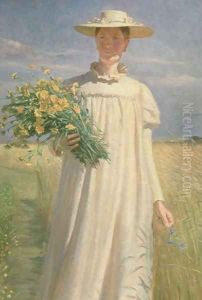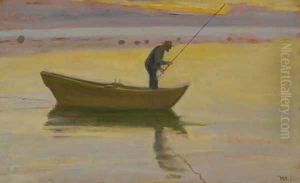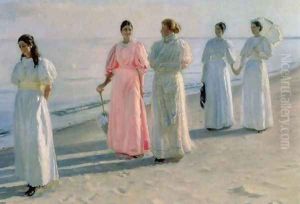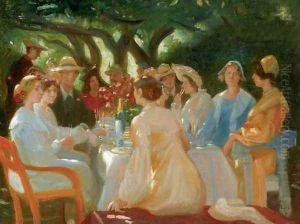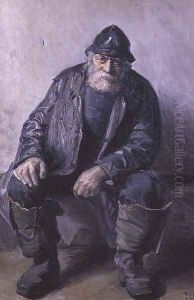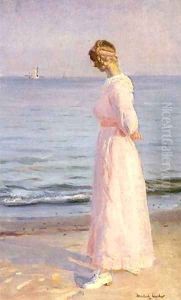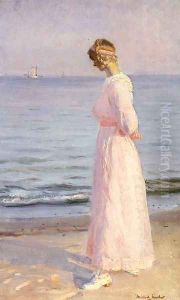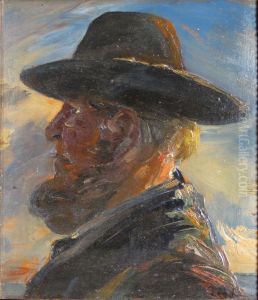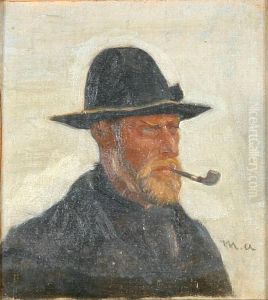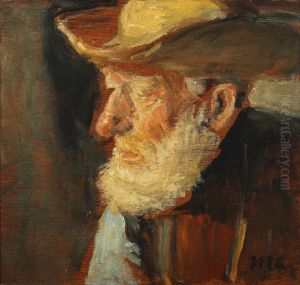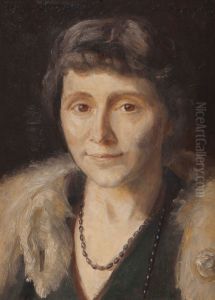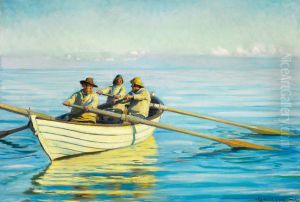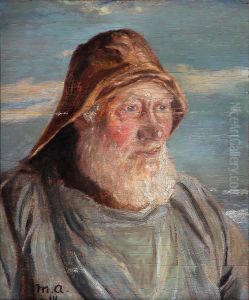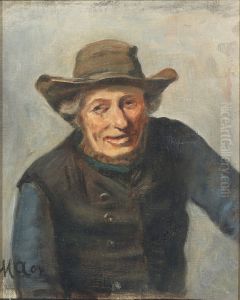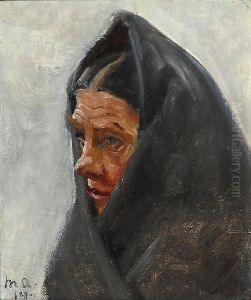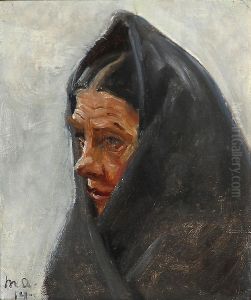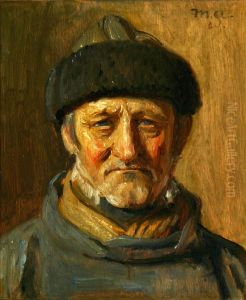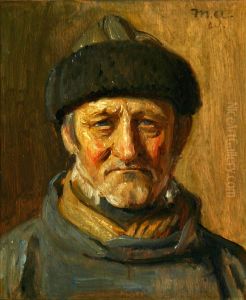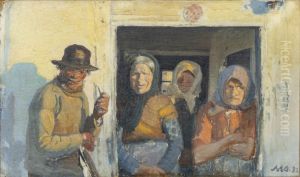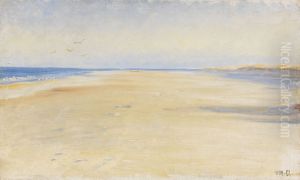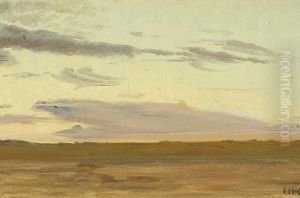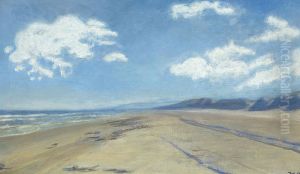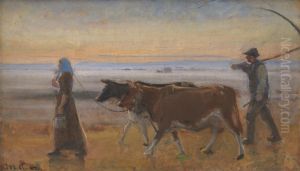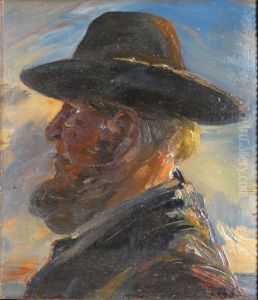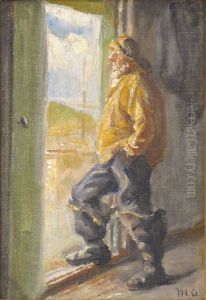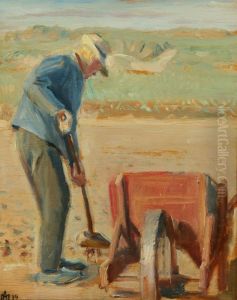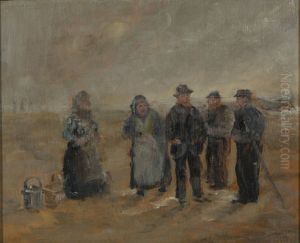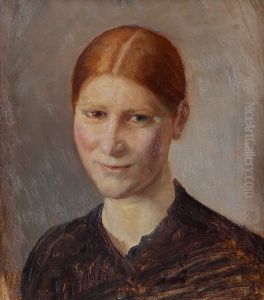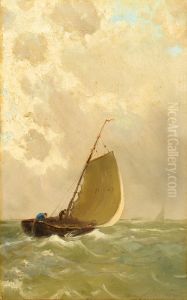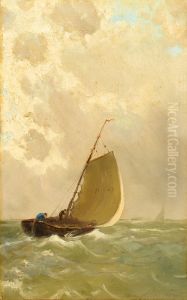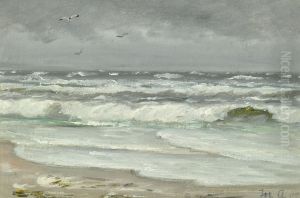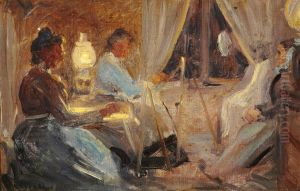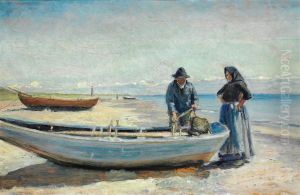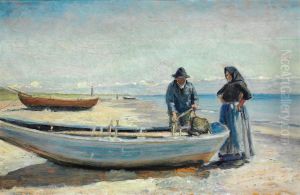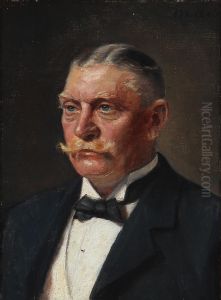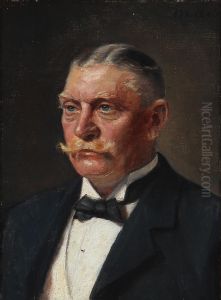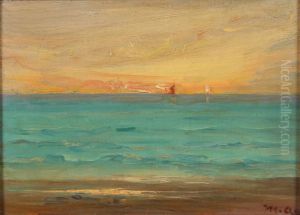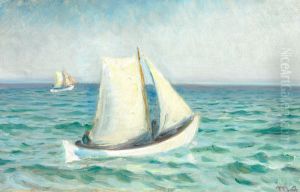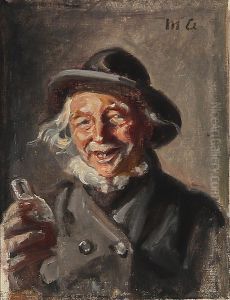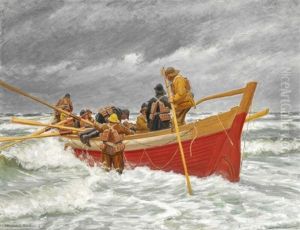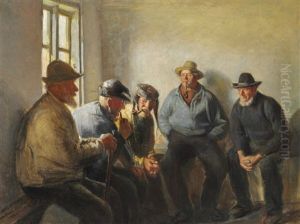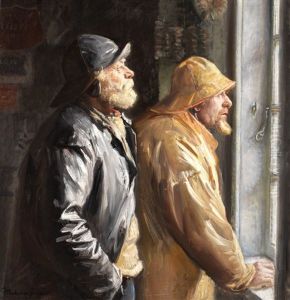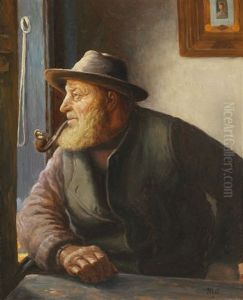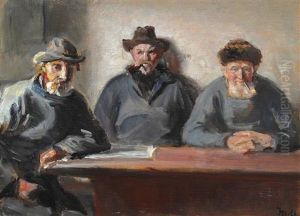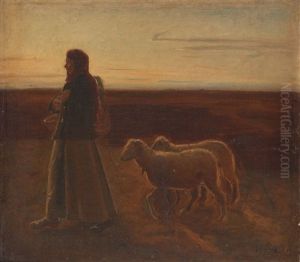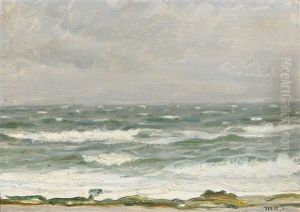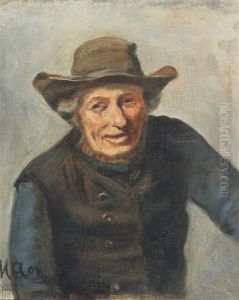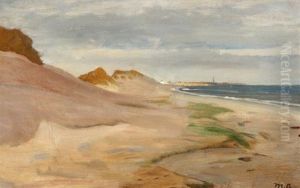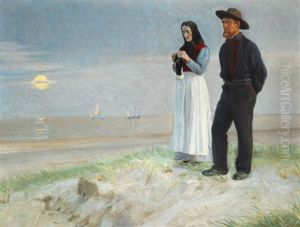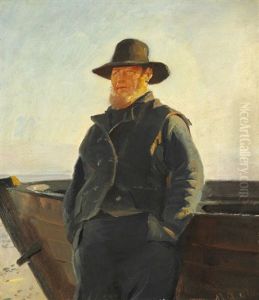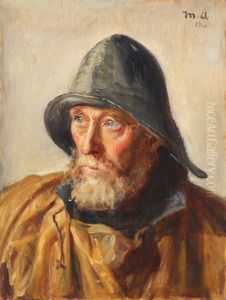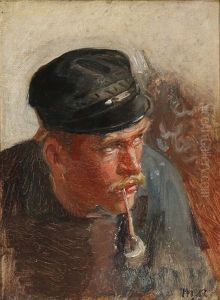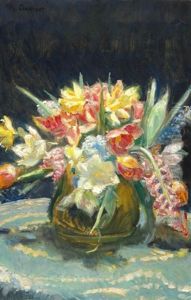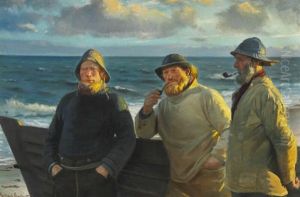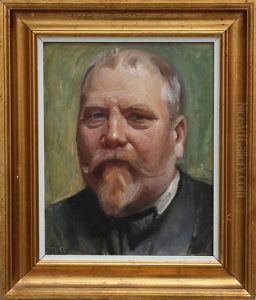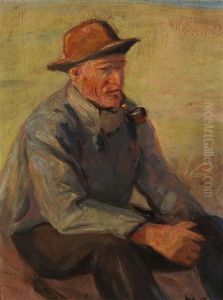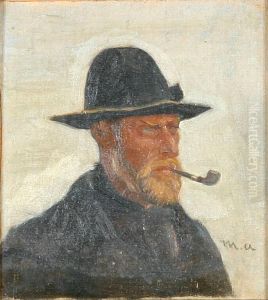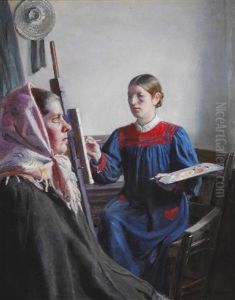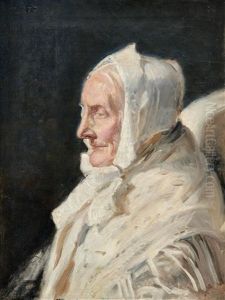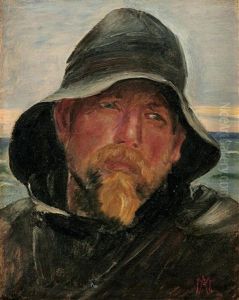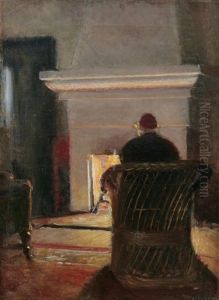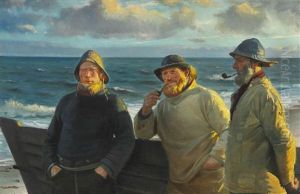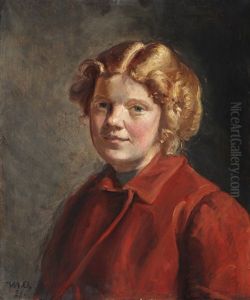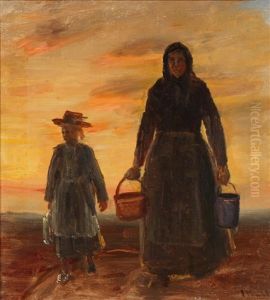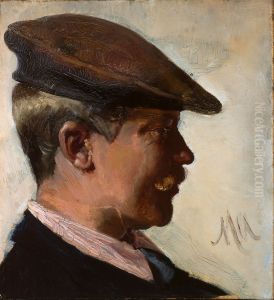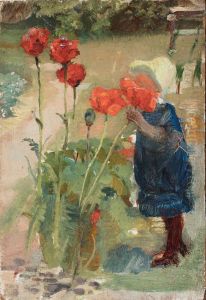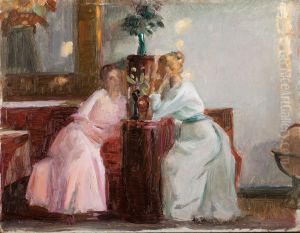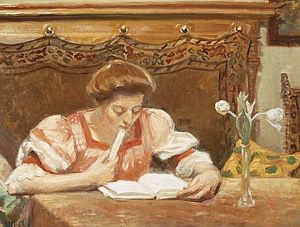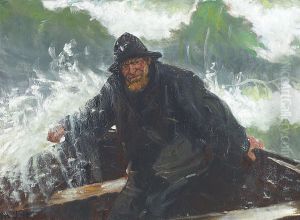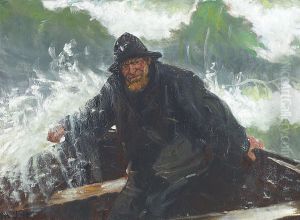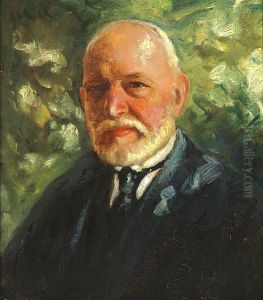Michael Peter Ancher Paintings
Michael Peter Ancher was a Danish realist artist, born on June 9, 1849, in the village of Rutsker on the island of Bornholm, Denmark. He is most commonly associated with the Skagen Painters, a group of Scandinavian artists who gathered in the picturesque fishing village of Skagen, Denmark, during the late 19th century. This community of artists sought to break away from the academic traditions of the time, focusing instead on plein air painting, naturalism, and the capture of light and everyday life.
Ancher first arrived in Skagen in 1874, where he became deeply inspired by the unique quality of the light and the local fisherfolk. He initially studied at the Royal Danish Academy of Fine Arts in Copenhagen but found his artistic calling in Skagen, where he moved permanently in 1880. In Skagen, he met fellow artist Anna Brøndum, whom he married in 1880. Together, they became central figures in the Skagen artistic colony, hosting many other artists at their home, which eventually became the Skagen Museum.
Ancher's work often depicted the lives and experiences of the local fishermen, capturing their daily struggles and triumphs with empathy and dignity. One of his most famous works, 'The Lifeboat is Taken through the Dunes' (1883), is a testament to his ability to portray the heroic and communal efforts of the Skagen people. His style was characterized by a realistic approach with particular attention to light and color, which he used to convey mood and atmosphere.
Throughout his career, Michael Ancher received numerous accolades and his paintings were exhibited internationally. He was awarded the Eckersberg Medal in 1889 and the Thorvaldsen Medal in 1893. The Anchers' house in Skagen, where Michael and Anna lived and worked, stands today as part of the Skagen Museum, which showcases the largest collection of their works.
Ancher continued to paint and be an active member of the Skagen community until his death on September 19, 1927. His legacy as a leading figure among the Skagen Painters and his contributions to Danish art history remain significant. Through his work, he documented a time, place, and community with authenticity and artistic integrity, leaving behind a body of work that continues to be celebrated in Denmark and beyond.
